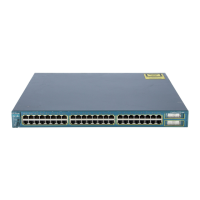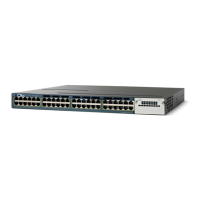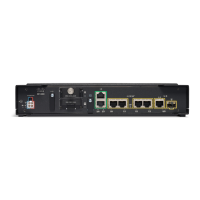Index
IN-26
Catalyst 3550 Multilayer Switch Software Configuration Guide
78-11194-09
default configuration
metrics
31-34
route 31-34
settings 31-30
described 31-29
interface parameters, configuring 31-32
LSA group pacing 31-36
monitoring 31-37
router IDs 31-36
route summarization 31-34
support for 1-6
virtual links 31-34
out-of-profile markdown 1-6
output interface, getting information about 37-19
P
packet modification, with QoS 29-17
PAgP
Layer 2 protocol tunneling
15-9
See EtherChannel
parallel paths, in routing tables
31-76
passive interfaces
configuring
31-85
OSPF 31-34
pass-through mode 29-33
passwords
default configuration
8-2
disabling recovery of 8-5
encrypting 8-4
for security 1-4
in clusters 6-16, 6-20
overview 8-1
setting
enable
8-3
enable secret 8-4
Telnet 8-6
with usernames 8-7
VTP domain 13-8
path cost
MSTP
17-18
STP 16-18
PBR
defined
31-82
enabling 31-84
fast-switched policy-based routing 31-84
local policy-based routing 31-84
support for 1-6
PC (passive command switch) 6-13, 6-23
peers, BGP 31-58
performance, network design 1-9
performance features 1-2
per-VLAN spanning-tree plus
See PVST+
PE to CE routing, configuring
31-70
physical ports 10-2
PIM
default configuration
34-13
dense mode
(S,G) notation
34-6
graft messages 34-6
overview 34-5
pruning and SPT 34-5
rendezvous point (RP), described 34-7
RPF lookups 34-10
displaying neighbors 34-59
enabling a mode 34-16
neighbor discovery and adjacencies 34-10
overview 34-5
router-query message interval, modifying 34-30
shared tree and source tree, overview 34-28
shortest path tree, delaying the use of 34-29
sparse mode
(*,G) notation
34-7
join messages and shared tree 34-7
overview 34-7
prune messages 34-8
RPF lookups 34-10

